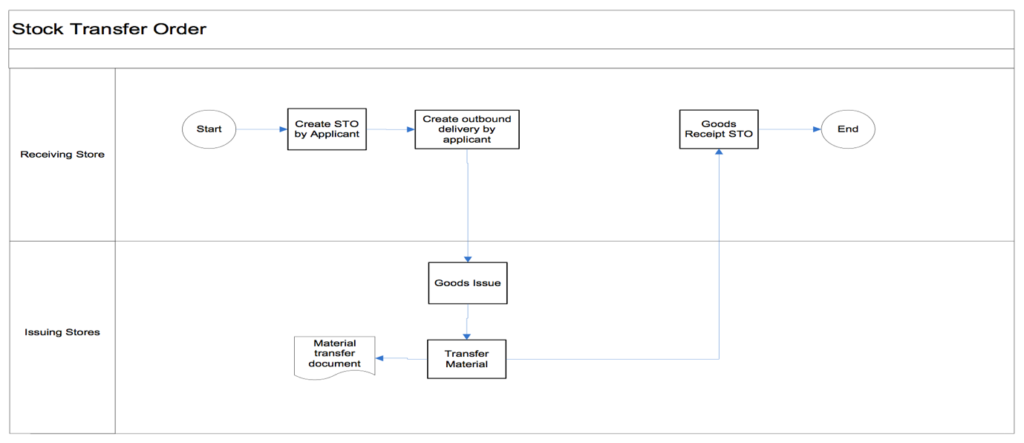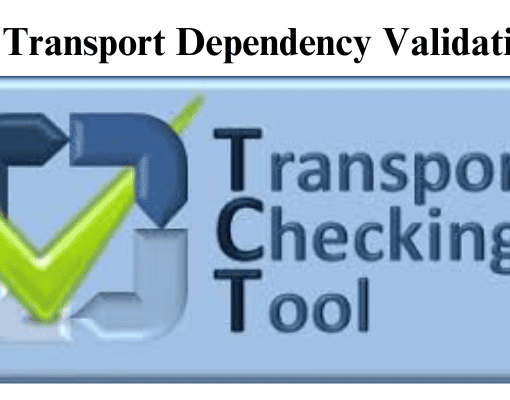STO full form in SAP: Unveiling the Power of STO
Ever wondered what “STO” stands for in the cryptic world of SAP? If you’re a logistics or inventory management professional, this abbreviation holds immense significance. In this blog, we’ll shed light on STO, STO full form in SAP, functionality within SAP, and the various advantages it offers for streamlining your internal stock movements.
Decoding STO: Stock Transport Order Explained

STO stands for Stock Transport Order. It’s a vital document used within the SAP system to manage the transfer of goods between different storage locations within the same company code. Think of it as a meticulously planned internal relocation process, ensuring your inventory moves seamlessly between warehouses, production plants, or depots.
The Journey of an STO: Understanding the Process
An STO facilitates the transfer of materials from a supplying plant (source) to a receiving plant (destination) within your organization. The process typically involves these key steps:
- Creation: An STO is initiated in the SAP system, specifying the materials to be transferred, quantities, and the receiving and supplying plants.
- Picking and Packing: Based on the STO, the supplying plant picks and packs the designated materials for shipment.
- Delivery Creation: A delivery document is generated within SAP, outlining the specifics of the transfer, including transportation details and any necessary documentation.
- Goods Issue and Receipt: The supplying plant performs a goods issue, decrementing their inventory stock levels. Conversely, the receiving plant performs a goods receipt, updating their stock levels upon arrival.
The Advantages of Leveraging STOs in SAP
Utilizing STOs offers a multitude of benefits for efficient inventory management within your organization:
- Enhanced Visibility and Control: STOs provide a clear audit trail for stock movements, allowing you to track material transfers and maintain accurate inventory records across your organization.
- Optimized Logistics: By pre-planning transfers through STOs, you can streamline logistics and optimize transportation resources for internal stock movements.
- Reduced Costs: STOs eliminate the need for external vendors or complex purchase orders for internal transfers, potentially leading to cost savings.
- Improved Production Efficiency: By ensuring timely material availability at production plants, STOs contribute to a smoother production flow and reduced downtime.
- Simplified Intercompany Transfers: For intra-company transfers with separate legal entities but a single company code, STOs offer a simplified process compared to intercompany sales and purchase orders.
Beyond the Basics: Additional Considerations for STOs
While STOs offer a robust solution for internal stock transfers, here are some additional points to keep in mind:
- Transfer Pricing: In some cases, transfer pricing strategies might be applied to STOs, especially for transfers between profit centers within the organization.
- Material Types: The SAP system allows for different material types to be managed through STOs, catering to diverse inventory needs.
- Integration with Other Modules: STOs can be seamlessly integrated with other SAP modules like Material Management (MM) and Warehouse Management (WM) for a holistic view of your inventory movements.
In conclusion, understanding STOs is essential for anyone involved in logistics or inventory management within SAP. By leveraging STOs effectively, you can optimize internal stock transfers, gain greater control over your inventory, and ultimately contribute to a more efficient and cost-effective supply chain.
So, the next time you encounter “STO” in SAP, remember it’s not just an abbreviation – it’s a powerful tool waiting to be harnessed for seamless internal material movements within your organization.
YOU MAY BE INTERESTED IN:
Streamlining Business Operations: A Guide to SAP Inventory Management
SAP MM Interview Questions and Answers




